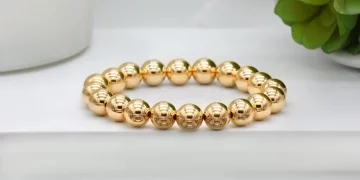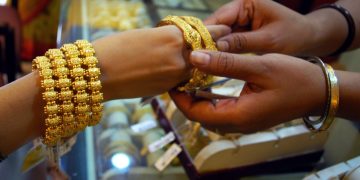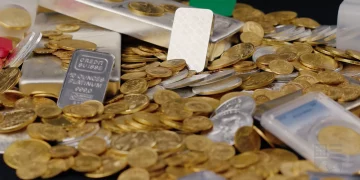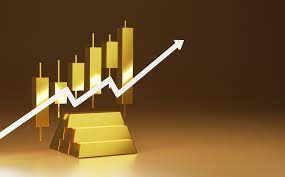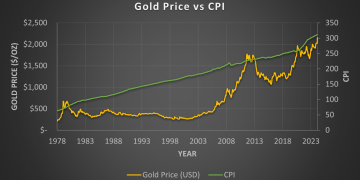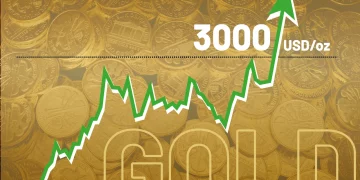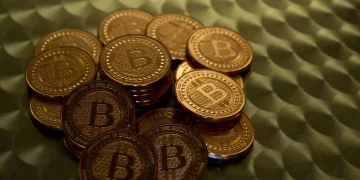The gold jewelry market has traditionally been characterized by luxury, craftsmanship, and timeless value. However, with the rapid advancements in technology, the industry is undergoing a significant transformation. From digital platforms facilitating buying and selling to the use of 3D printing and artificial intelligence (AI) in design, technology is reshaping the way consumers interact with and invest in gold jewelry. In this article, we will explore how these technological innovations are affecting the market, and what this means for buyers, sellers, and investors.
The Rise of Digital Platforms for Buying and Selling Gold Jewelry
The advent of e-commerce has revolutionized nearly every industry, and gold jewelry is no exception. Online platforms now allow consumers to browse and purchase gold jewelry with ease, offering greater convenience and access to a global marketplace. Websites and apps dedicated to gold jewelry sales have emerged, offering everything from traditional pieces to modern, contemporary designs.
Moreover, the rise of online marketplaces and digital platforms is enabling smaller designers and independent jewelers to reach a wider audience. No longer are consumers confined to local jewelry stores; they can now access a wide range of designers, price points, and styles from across the globe. Platforms like Etsy, Shopify, and even Instagram have become crucial in connecting jewelry makers with potential buyers.
In addition to expanding consumer choice, digital platforms also bring increased transparency. Many online retailers provide detailed product descriptions, certifications, and pricing breakdowns, allowing buyers to make informed decisions. Moreover, the availability of reviews and feedback from previous buyers adds an additional layer of trust.
However, there are some challenges. Buyers are unable to physically inspect jewelry before purchase, and issues like shipping costs, delays, and potential fraud are concerns that must be addressed. Nonetheless, these platforms are shaping the future of gold jewelry by making it more accessible to a wider audience.
How 3D Printing and AI Are Influencing Jewelry Designs
One of the most exciting technological developments in the gold jewelry industry is the rise of 3D printing. This technology allows designers to create intricate and detailed jewelry pieces without the need for traditional molding or casting. 3D printing provides unparalleled precision and flexibility, enabling designers to bring even the most complex concepts to life.
For jewelers, this technology reduces the time and costs associated with traditional manufacturing processes. It also allows for greater experimentation with innovative designs that would have been difficult or impossible to achieve with traditional methods. As a result, 3D printing is opening up new possibilities in terms of customization, allowing customers to create bespoke pieces that reflect their personal tastes.
AI, on the other hand, is making waves in the design and manufacturing process. AI algorithms can predict trends, optimize designs, and even suggest color combinations and material pairings. Some jewelry designers are already using AI to assist in crafting unique, data-driven designs that meet consumer preferences. Moreover, AI tools are helping jewelers streamline their production processes, reducing waste and improving efficiency.
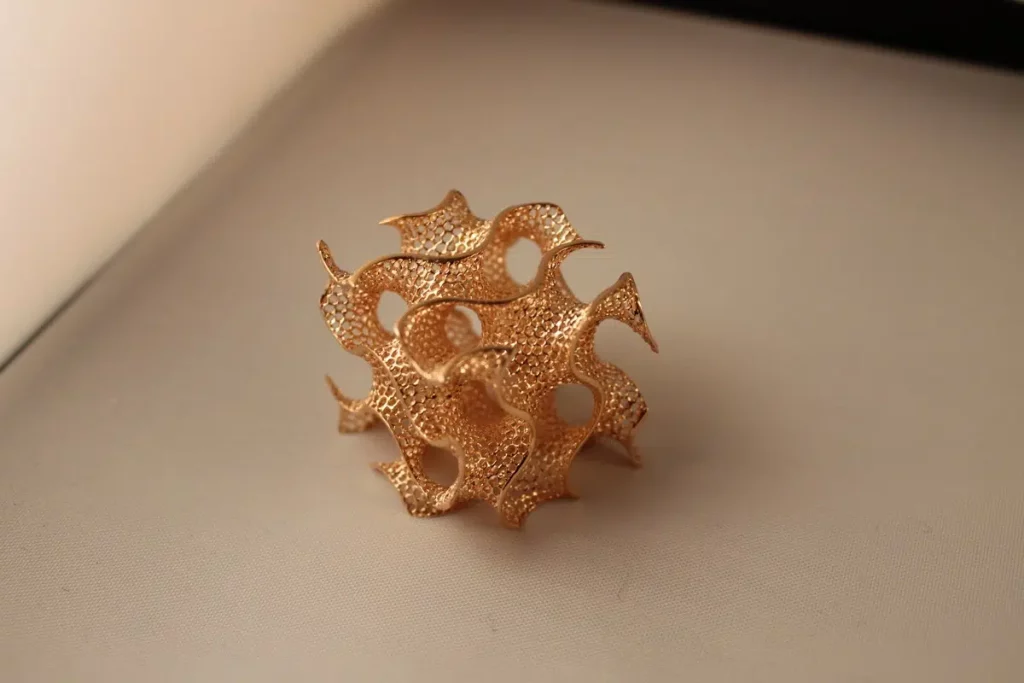
From a consumer’s perspective, these technological advancements mean more options and personalized experiences. AI-based jewelry design software can help customers visualize how a design will look on their bodies or faces, allowing them to make more informed decisions. Whether it’s a custom engagement ring or a one-of-a-kind necklace, technology is helping people create jewelry that is uniquely their own.
Trends in Online Gold Jewelry Investments
Gold jewelry has long been regarded as a store of value, but the rise of digital platforms is now facilitating online investments in the asset. Through platforms like GoldMoney or BullionVault, investors can purchase gold bullion, coins, and even jewelry as part of a broader investment strategy. The digitization of gold has enabled a new wave of investors who view gold not only as a safe-haven asset but as an integral part of their investment portfolios.
For investors, buying gold jewelry as an asset can present several advantages. Not only does it offer the potential for price appreciation, but certain pieces also carry intrinsic value due to their craftsmanship, brand recognition, and rarity. As these platforms continue to grow in popularity, more people are recognizing the benefits of incorporating gold jewelry into their broader investment strategies.
Furthermore, digital wallets and blockchain technology have introduced a new level of transparency and security. Blockchain’s decentralized ledger technology ensures that every transaction is recorded, and ownership is traceable, reducing the risks of fraud or counterfeit products. This feature is particularly useful for high-value pieces, where authenticity and provenance are essential.
For those interested in both wearing and investing in gold, digital platforms now allow for the seamless integration of personal style with financial strategy. Jewelry not only serves as a functional item of luxury but also as a hedge against inflation and economic uncertainty.
How These Technological Shifts Are Affecting Market Behavior
The intersection of gold jewelry and technology is affecting market behavior in a number of ways. First and foremost, the ability to customize and personalize jewelry through digital platforms has shifted consumer expectations. Jewelry buyers today are more interested in unique, one-of-a-kind pieces that reflect their personality and values. This has led to the rise of designer jewelry, personalized engravings, and custom designs.
Another significant change is the growing demand for eco-friendly and ethically sourced gold jewelry. Consumers are becoming more conscious of the environmental and social impacts of their purchases. The rise of ethical sourcing and the use of recycled gold in jewelry production has become an important trend in the industry. Technology is enabling jewelers to track the origin of their materials, ensuring that their products align with consumers’ ethical expectations.
From an investment perspective, the market is becoming more accessible. Traditional barriers to entry, such as high minimum purchase requirements or the need for in-person visits, have been lowered by the digitalization of gold trading. Today, anyone with an internet connection can buy gold jewelry, making it a more viable investment for a broader range of people.
Lastly, technology is influencing how people buy and sell second-hand gold jewelry. Online platforms dedicated to reselling jewelry have seen significant growth in recent years. This trend is driven by both economic factors (such as a desire to sell unwanted pieces for cash) and the sustainability movement, where consumers prefer to buy pre-owned rather than new items to reduce their environmental footprint.
Conclusion
Technology is undeniably transforming the gold jewelry market, making it more accessible, customizable, and transparent. Digital platforms are revolutionizing the way consumers purchase and invest in gold jewelry, while 3D printing and AI are enabling unprecedented levels of design innovation. As the market continues to evolve, it is clear that technology will play an increasingly important role in shaping the future of the gold jewelry industry. For buyers, sellers, and investors alike, understanding these technological shifts is crucial for staying ahead of the curve and capitalizing on new opportunities in the market.

